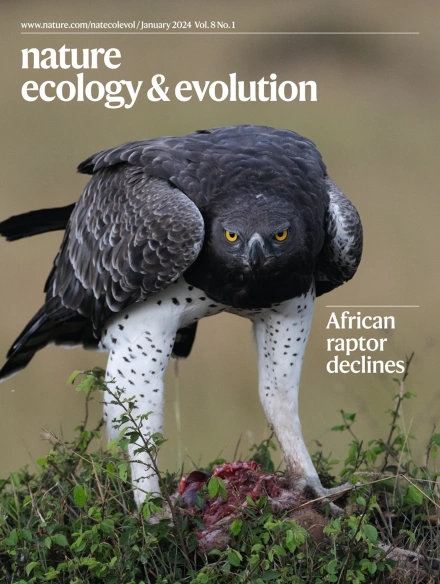Green divides
IF 13.9
1区 生物学
Q1 ECOLOGY
引用次数: 0
绿色的分裂
当土地被已建成的基础设施覆盖时,城市化必然导致直接的植被损失。但是,剩余植被的生长也可能受到城市化的影响,比如通过种植和灌溉,以及通过城市保温延长生长季节或通过提高二氧化碳水平来增强施肥等过程。Chen等人在Nature Sustainability上发表文章,利用不透水表面和植被绿化率的卫星数据集,探讨了城市化对植被动态的直接和间接影响。在全球4718个城市中,他们发现,2000年至2019年间,不透水表面的平均比例从0.46增加到0.62;东亚和南亚、太平洋和撒哈拉以南非洲的城市经历了最高的变化率。在这些快速发展的城市中,许多城市的植被指数显示出褐变趋势,但全球45%的城市——主要是欧洲、北美和东北亚——实际上在此期间变绿了。总体而言,城市化对植被的积极间接影响减轻了全球北方城市79%的负面直接影响,但在全球南方城市仅减轻了38%。城市化驱动的植被生长增强与更快的城市化、更早的城市化、更冷的地区和国内生产总值呈正相关。作者在三种共享的社会经济路径下对2040年城市植被变化的建模显示,这些不同的趋势仍在继续,这将加剧世界不同地区城市居民接触绿色空间的不平等。原始参考:没有,维持。https://doi.org/10.1038/s41893 - 025 - 01520 - 0 (2025)
本文章由计算机程序翻译,如有差异,请以英文原文为准。
求助全文
约1分钟内获得全文
求助全文
来源期刊

Nature ecology & evolution
Agricultural and Biological Sciences-Ecology, Evolution, Behavior and Systematics
CiteScore
22.20
自引率
2.40%
发文量
282
期刊介绍:
Nature Ecology & Evolution is interested in the full spectrum of ecological and evolutionary biology, encompassing approaches at the molecular, organismal, population, community and ecosystem levels, as well as relevant parts of the social sciences. Nature Ecology & Evolution provides a place where all researchers and policymakers interested in all aspects of life's diversity can come together to learn about the most accomplished and significant advances in the field and to discuss topical issues. An online-only monthly journal, our broad scope ensures that the research published reaches the widest possible audience of scientists.
 求助内容:
求助内容: 应助结果提醒方式:
应助结果提醒方式:


